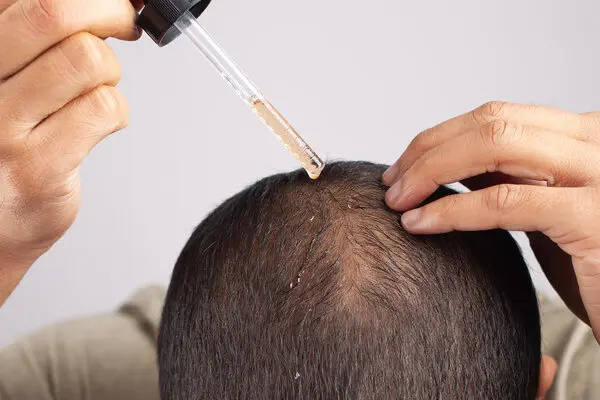
Hair loss is a common concern affecting millions, and with the flood of products and remedies available, it can be overwhelming to know what truly works. If you’re considering professional care, understanding the most effective solutions can save you time, money, and frustration. Whether you’re planning to visit a specialized New Jersey hair loss treatment center or consult a trusted hair loss doctor, this guide breaks down proven hair loss treatment options, focusing especially on effective non-surgical hair loss treatment methods.
Why Should You Consult a Hair Loss Doctor?
Can Over-the-Counter Solutions Really Help?
Many people start with shampoos, supplements, or home remedies. While some of these can support hair health, a significant number of hair loss cases require targeted medical intervention. A hair loss doctor specializes in diagnosing the cause of your hair thinning or shedding, which can range from genetics to hormonal imbalances or underlying health issues.
By consulting a professional, you benefit from:
• Accurate diagnosis and personalized treatment plans.
• Access to FDA-approved medications and therapies.
• Monitoring and adjusting treatments based on progress.
What Non-Surgical Hair Loss Treatment Options Actually Work?
Not everyone wants or needs surgery. Thankfully, there are several effective non-surgical hair loss treatment options that promote hair regrowth and slow down hair loss with minimal downtime.
1. Medications: The First Line of Defense
• Minoxidil: A topical treatment approved by the FDA, minoxidil increases blood flow to hair follicles and prolongs the growth phase. It’s available over-the-counter and works best for early-stage hair loss.
• Finasteride: An oral prescription medication for men, finasteride blocks the hormone responsible for hair follicle shrinkage. It requires medical supervision due to potential side effects.
2. Platelet-Rich Plasma (PRP) Therapy
Increasingly popular in hair loss treatment centers, PRP therapy uses your own blood’s platelets to stimulate hair follicles naturally. It is a safe, minimally invasive option that encourages thicker, healthier hair growth.
Benefits of PRP include:
• Uses natural growth factors.
• Minimal side effects.
• Suitable for men and women with early to moderate hair loss.
3. Low-Level Laser Therapy (LLLT)
This FDA-cleared treatment involves exposing the scalp to red light lasers, which enhance cellular activity and promote hair growth. LLLT devices can be used in clinics or at home with FDA-approved helmets and combs.
4. Microneedling
Often combined with topical treatments or PRP, microneedling creates tiny punctures in the scalp to boost blood flow and stimulate collagen production, improving hair follicle health.
How Can a Hair Loss Treatment Center Help You?
What Makes a Hair Loss Treatment Center Different?
A professional hair loss treatment center offers comprehensive evaluation and access to multiple advanced therapies under one roof. Instead of piecing together random treatments, you get:
• Expert diagnosis by specialized dermatologists or hair loss doctors.
• Customized treatment plans combining medications, PRP, laser therapy, and more.
• Regular follow-ups to track progress and adjust therapies.
• Access to clinical-grade equipment and trained staff.
This holistic approach increases the chances of successful hair restoration.
Tips for Choosing the Right Hair Loss Treatment
• Start Early: The sooner you address hair loss, the better your chances of maintaining and regrowing hair.
• Consult Professionals: Self-treatment can delay effective care or worsen conditions.
• Be Patient: Hair regrowth takes time; most treatments show noticeable results after 3-6 months.
• Follow Instructions: Consistency with medications and therapies is key.
• Maintain a Healthy Lifestyle: Nutrition, stress management, and proper scalp care support all treatments.
Frequently Asked Questions About Hair Loss Treatment
How Long Does Non-Surgical Hair Loss Treatment Take to Show Results?
Generally, you can expect to see improvement within 3-6 months, but full results may take up to a year. Regular treatment sessions and follow-ups are essential.
Are Non-Surgical Treatments Painful?
Most non-surgical hair loss treatment options like PRP and laser therapy are minimally invasive and cause little to no discomfort.
Can Women Benefit From These Treatments?
Absolutely. Many non-surgical options, including PRP and topical minoxidil, are safe and effective for women experiencing hair thinning.
Conclusion
Hair loss can be distressing, but with the right guidance and treatment, you can regain confidence and improve hair health. Consulting a hair loss doctor at a reputable hair loss treatment center is the best way to start your journey. Non-surgical options like medications, PRP therapy, laser treatments, and microneedling offer proven results without the risks and downtime of surgery.
Remember, the key to success lies in early intervention, personalized care, and consistent treatment. By choosing a professional center that combines expertise with advanced therapies, you maximize your chances of restoring your hair and feeling great again.
Don’t let hair loss define you—explore your options today and take the first step towards healthier hair! prp hair loss treatment center New Jersey

